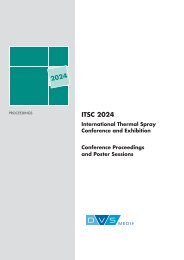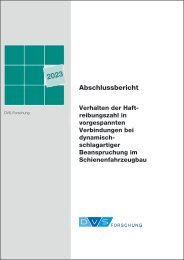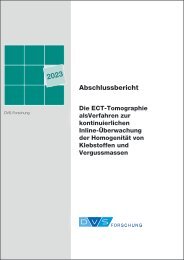STEEL + TECHNOLOGY 01/2020 EXTRACT
STEEL + TECHNOLOGY 01/2020 EXTRACT
STEEL + TECHNOLOGY 01/2020 EXTRACT
Create successful ePaper yourself
Turn your PDF publications into a flip-book with our unique Google optimized e-Paper software.
38 | <strong>STEEL</strong> <strong>TECHNOLOGY</strong><br />
Steelmaking<br />
Thermochemical erosion of ladle well fillers<br />
during steel production<br />
In 2<strong>01</strong>6 the authors’ findings on temperature distribution and oxygen partial pressures in the well block of steel<br />
ladles in an EAF steel plant in northern Spain were published [1]. Fuelled by these observations, further<br />
experiments were conducted to examine the thermophysical properties of ladle well fillers and intensively<br />
research their sintering behaviour and the consequential development of mechanical strength. To verify their<br />
conclusions and gain new information on the thermochemical interactions between ladle well fillers and steel,<br />
Purmetall and Forschungsgemeinschaft Feuerfest realized a follow up project together with Georgsmarienhütte,<br />
wherein live trials and laboratory experiments lead to new insights.<br />
During steel production, ladle well fillers<br />
are exposed to a wide range of<br />
conditions, depending on the process<br />
route, the applied treatments and the<br />
chemical composition of the produced<br />
steel grade. Free opening ladle wells are<br />
essential for the efficient production of<br />
high-quality steel grades. To verify the theories<br />
resulting from their ongoing research<br />
efforts [1], Purmetall GmbH Co. KG conducted<br />
industrial trials with Georgsmarienhütte<br />
GmbH in the EAF steel plant in<br />
Georgsmarienhütte, Germany, to examine<br />
the behaviour and thermochemical erosion<br />
of an applied mass of ladle well filler in<br />
contact with liquid steel during routine production.<br />
As a supplier for the automotive industry,<br />
Georgsmarienhütte steel works produce<br />
roughly three quarter million tons of<br />
steel rounds in its eponymous hometown.<br />
The steel mill is equipped with a 140 t DC<br />
EAF, two ladle furnaces, a purging stand,<br />
wire injector and a vacuum degassing facility.<br />
The finished, high quality steel grades<br />
are then shaped via a six-strand billet caster<br />
or ingot casting.<br />
Industrial trials<br />
At Georgsmarienhütte, steel ladles are<br />
equipped with two slide gate systems,<br />
one main operating well block, inner nozzle<br />
and slide gate and one backup system.<br />
The main slide gate is used during routine<br />
production at the continuous caster. Well<br />
block and casting channel are cleaned and<br />
ladle well filler is added to the casting<br />
channel. After the following treatment of<br />
the produced steel grade, the main slide<br />
gate system opens and the ladle well filler<br />
flows into the tundish, enabling a free<br />
opening of the steel ladle. Since the ladle<br />
well filler from the main slide gate system<br />
is hereby lost, only the backup system<br />
allows trials which examine the applied<br />
mass of ladle well filler after steel production.<br />
For these trials, the backup system<br />
that is not routinely opened during regular<br />
production was cleaned from both, ladle<br />
top and bottom before addition of ca. 50<br />
Figure 1. GMH process route (Picture: Purmetall)<br />
Figure 2. Slide gates seen from the ladle<br />
bottom (Picture: Purmetall)<br />
Dipl.-Ing. Marc Andre Bombeck, M.Eng. Malte Janssen, Purmetall GmbH & Co. KG, Oberhausen, Germany; Dr.- Ing.<br />
Thomas Deinet, Forschungsgemeinschaft Feuerfest e.V., Höhr-Grenzhausen, Germany; Dr. rer. nat. Amin El Gammal,<br />
Georgsmarienhütte GmbH, Georgsmarienhütte, Germany – Contact: janssen@purmetall.de<br />
<strong>STEEL</strong> + <strong>TECHNOLOGY</strong> 2 (<strong>2020</strong>) No. 1


















